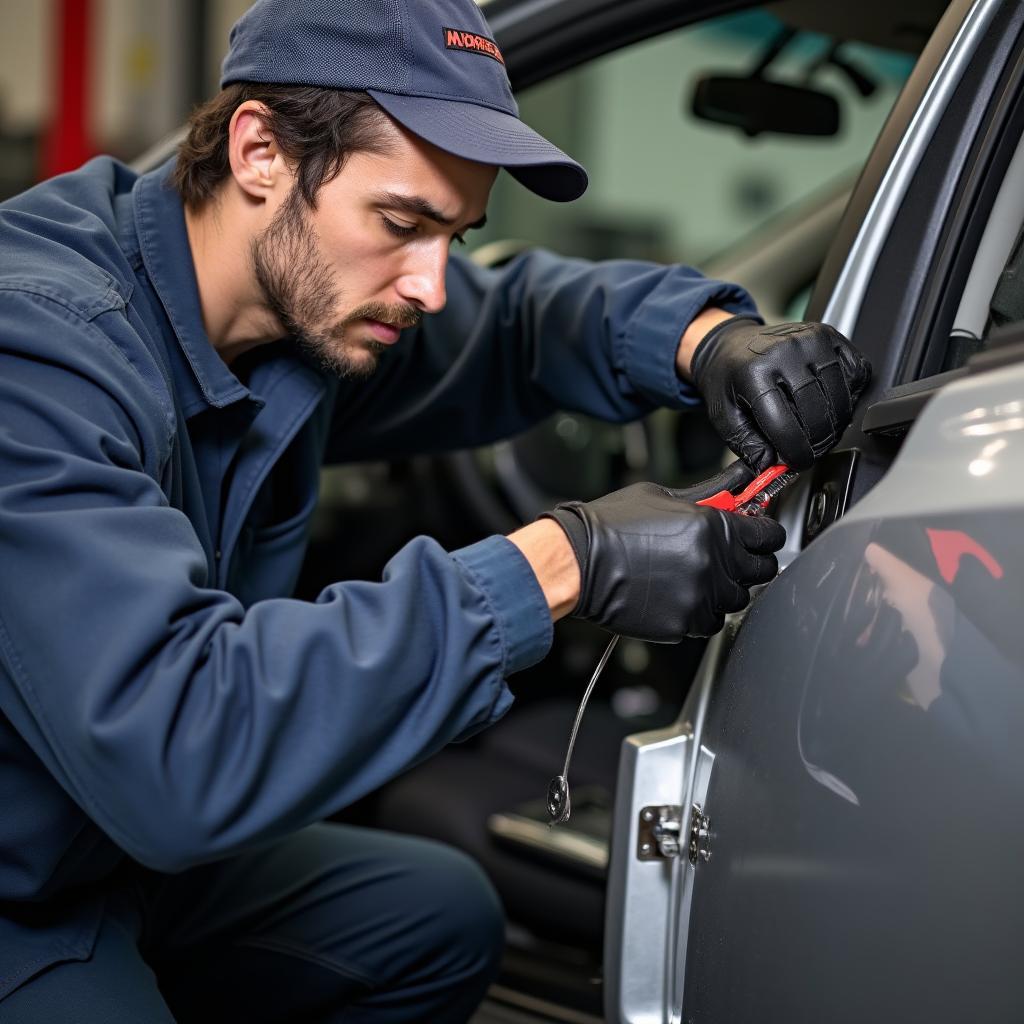Dealing with a stubborn car window that refuses to budge? You’re not alone. Electric windows are a common feature in modern vehicles, offering convenience and a sleek aesthetic. But like any electrical component, they can malfunction, leaving you cranking a handle that doesn’t exist. This guide dives deep into the intricacies of electric car window repair, providing you with the knowledge to understand the problem and potentially even fix it yourself.
Common Causes of Electric Window Failure
Before you grab your toolbox, it’s crucial to pinpoint the source of the issue. Electric window problems can stem from various culprits, each requiring a different approach to repair.
-
Failing Window Regulator: The regulator is the muscle behind your window’s movement. Over time, the cables within the regulator can fray, break, or become misaligned, preventing the window from moving smoothly or at all.
-
Malfunctioning Window Motor: This provides the power to raise and lower the window. If you hear a clicking sound but the window remains stationary, a failing motor might be the culprit.
-
Faulty Window Switch: This is the command center for your electric windows. Worn-out contacts or a faulty switch can interrupt the electrical signal, rendering your window immobile.
-
Blown Fuse: A sudden power surge or short circuit can blow a fuse dedicated to your car’s power windows. This is often a simple fix but requires locating and replacing the correct fuse.
Diagnosing the Problem
Accurately diagnosing the problem is crucial for effective repair. Here’s a step-by-step approach:
-
Listen Carefully: Activate the window switch and listen for any unusual sounds. A clicking noise often indicates a failing motor or regulator issue, while silence might point to a faulty switch or blown fuse.
-
Check the Switch: Inspect the window switch for any visible damage or wear. If possible, test the window using a different switch to rule out a switch-related problem.
-
Inspect the Fuses: Locate your car’s fuse box and identify the fuse associated with the power windows. Check the fuse for any signs of damage or a blown circuit.
-
Examine the Motor and Regulator: If the issue persists, you might need to remove the door panel to access the motor and regulator. Inspect them for visible damage or obstructions.
Repair or Replace?
The decision to repair or replace often depends on the severity and nature of the problem, as well as your budget and DIY skills.
-
DIY Fixes: Replacing a blown fuse or a faulty window switch can often be done at home with basic tools and some mechanical know-how.
-
Professional Help: Repairing or replacing a window regulator or motor often requires specialized tools and expertise, making it advisable to seek professional assistance.
 Car mechanic repairing an electric window
Car mechanic repairing an electric window
Preventing Future Problems
Maintaining your car’s electric windows can prevent costly repairs down the line. Regularly clean the window tracks and lubricate them with a silicone-based lubricant to ensure smooth operation.
Conclusion
Repairing electric windows in your car can seem daunting, but understanding the common causes and diagnostic steps can empower you to tackle the issue head-on. Whether you choose a DIY fix or seek professional help, addressing the problem promptly ensures the convenience and functionality of your car’s electric windows for miles to come.

